For a young couple with a deep appreciation of craft—one is a hobby woodworker and the other a shoe designer—Brooklyn-based studio Brent Buck Architects has refashioned a historic townhouse near the borough’s Williamsburg waterfront as an apt home. In addition to restoring the street-facing facade, the firm extended the original structure in three directions—downward, to heighten a cellar-level studio; upward, to add a floor and roof terrace; and rearward, to lengthen the plan. Inside, a trove of delightful moments spring from an astonishingly minimal palette of pine, plaster, marble, and brass.
Throughout the townhouse, hand-troweled Venetian plaster walls have been coated with wax, adding a subtle texture and velvety shimmer to an otherwise muted ivory backdrop. Leaning into the plasterwork, the architects also used the material to accentuate soft, sculptural details—sharply creased corners counterbalance rounded ones, and, on occasion, they intermingle. At the grand archway on the parlor floor, which separates the living and dining spaces, curved edges terminate near the floor at pointed plinths—a pared-down take on traditional molding profiles commonplace in townhouses of the same era.
A sinuous staircase, also rendered in plaster, ascends through the residence, torquing along the way to accommodate different plan configurations. On the lower two levels, long runs of stairs assume a more conventional oval shape, while, on the upper floors, they turn and run perpendicular to the ones below, maximizing usable square footage along the street-facing and rear facades. A half-round handrail corkscrews up toward the bulkhead, where a circular skylight, with a coved surround, permits daylight to graze the many curvilinear surfaces, including arched niches. A certain classicism undergirds this wonderfully plastic staircase—rigor without the de rigueur fussiness.
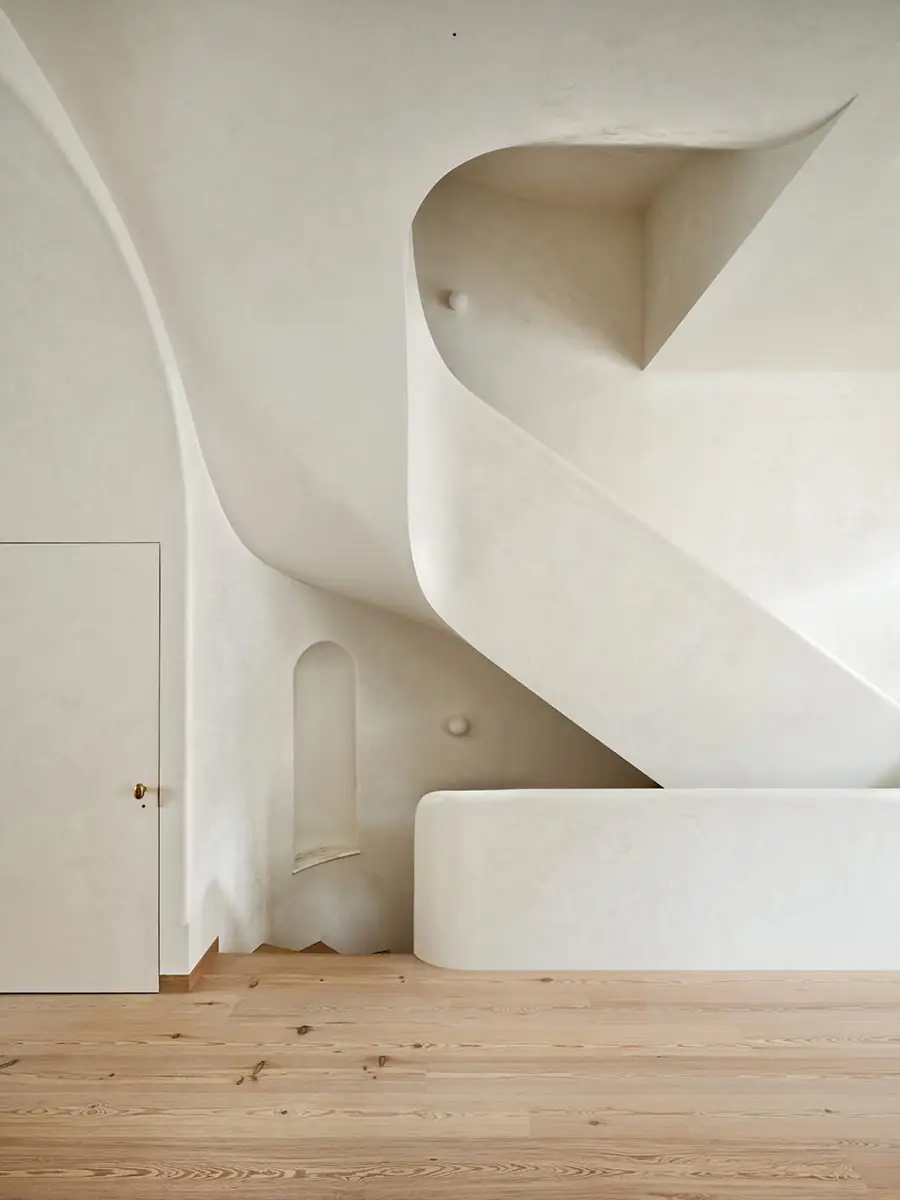
1
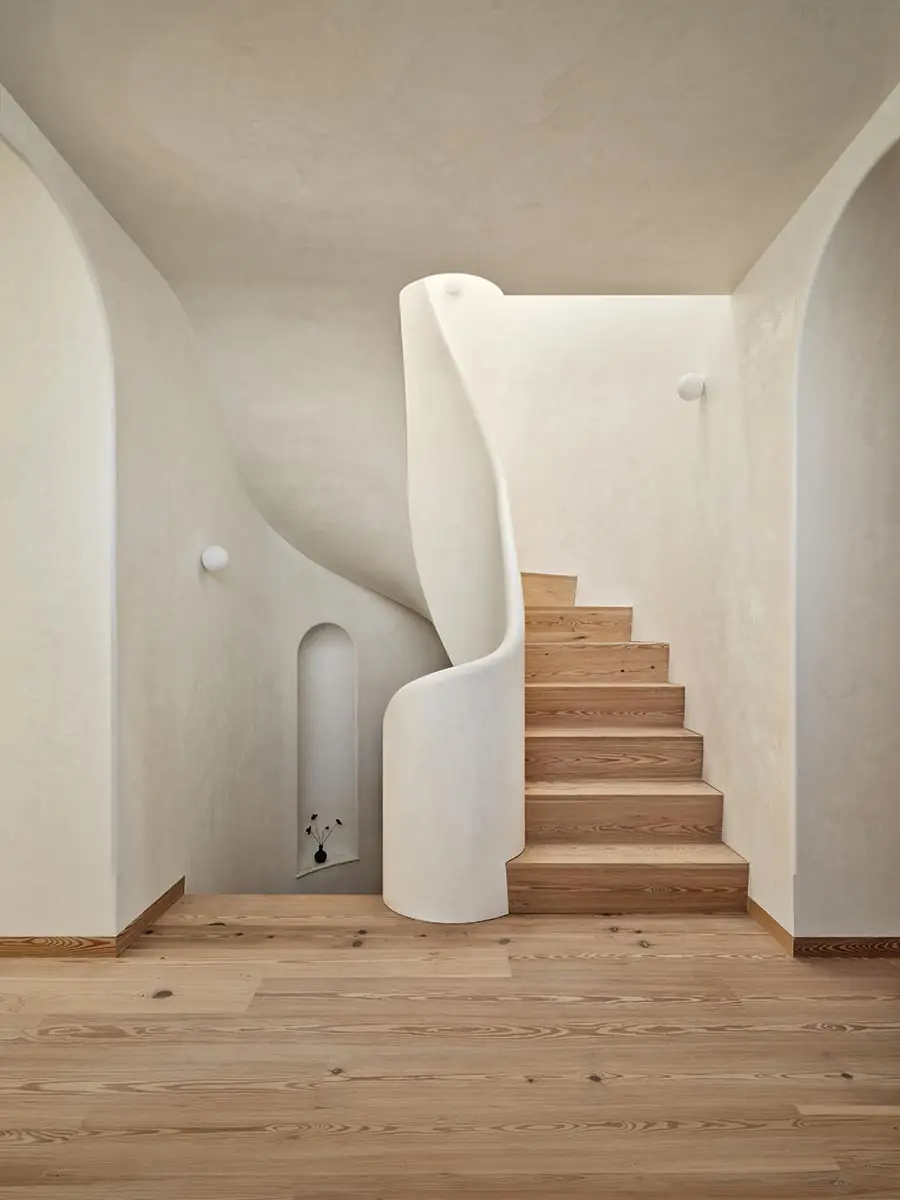
2
A sinuous staircase ascends through the townhouse (1 - 3). Photos © Christopher Sturman, click to enlarge.
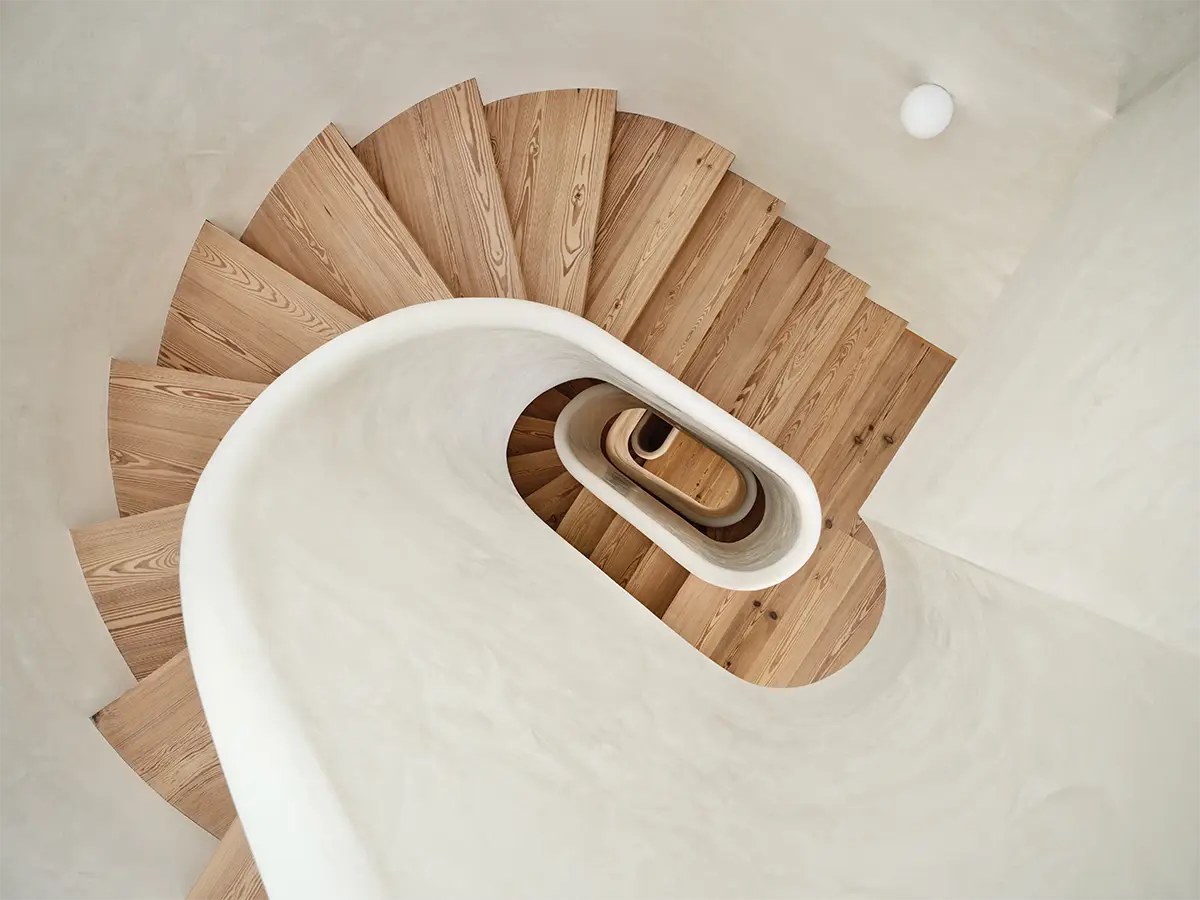
3
The primary suite occupies the second floor. As clients sometimes do, the couple made an unusual request—that the bedroom and bathroom be combined. Beyond a set of French doors, past reeded glass partitions, and on axis with a barrel-vaulted hall, a striking brass bathtub holds court. Venetian plaster, here in a smoky charcoal, envelops the alluring space, which includes a custom bed frame and an oiled black soapstone double vanity. On the opposite end of this floor, there is a walk-in closet and separate workspace that one day could serve as a nursery.
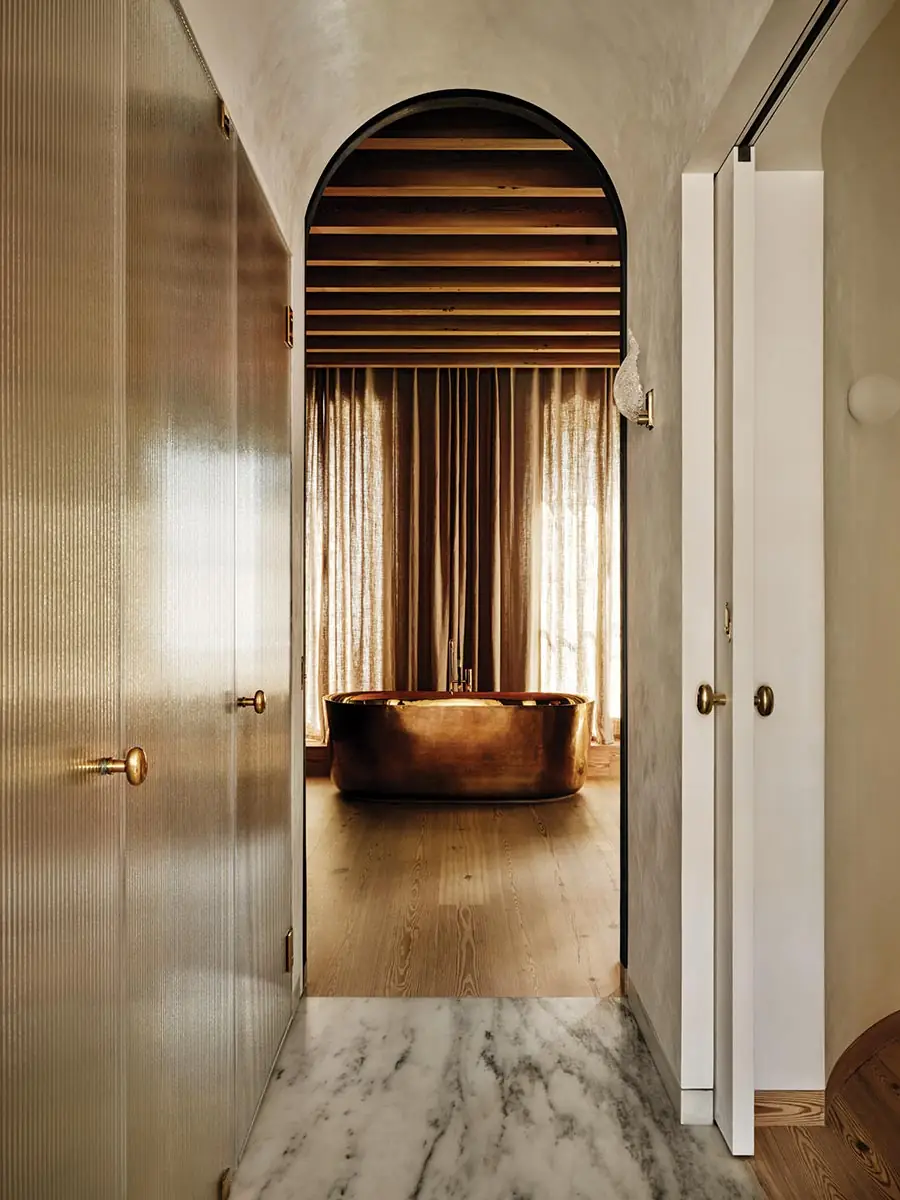
4
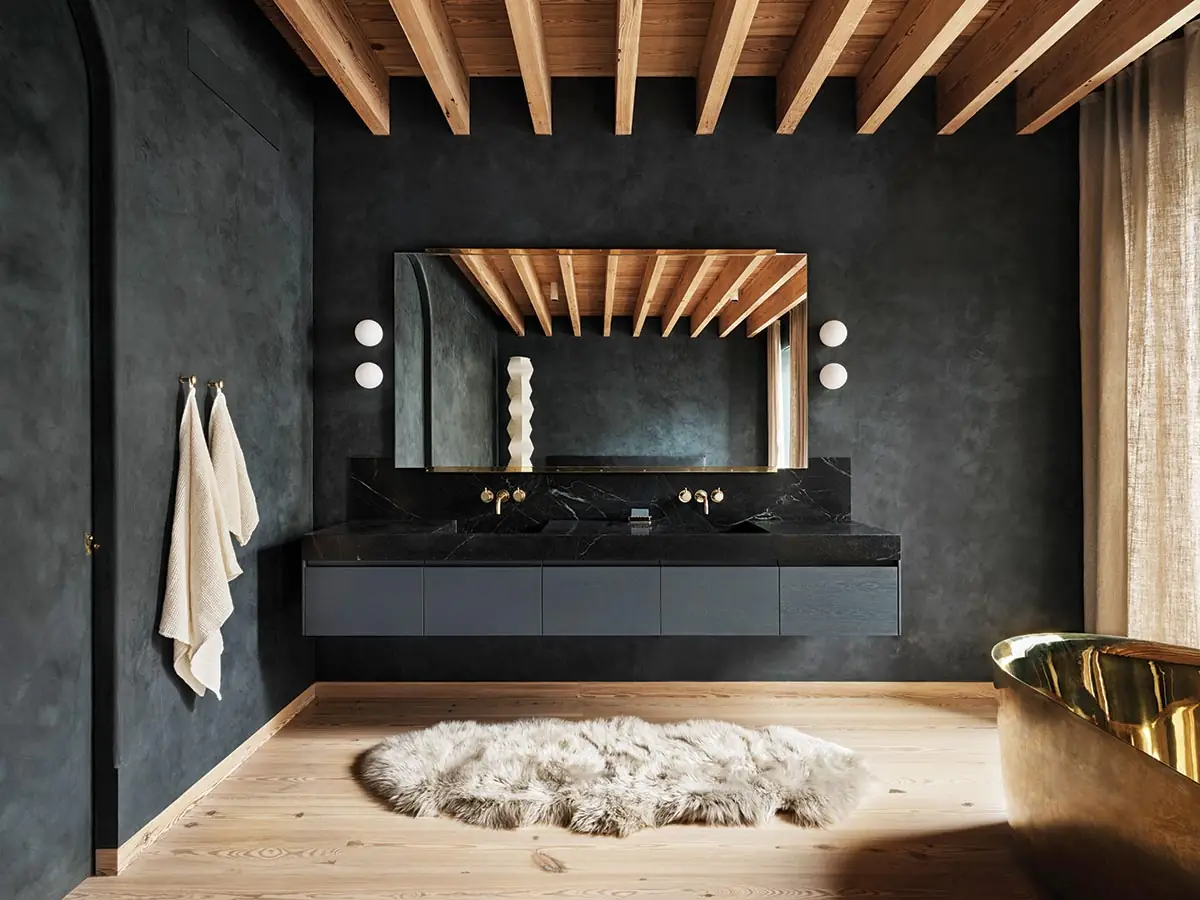
5
A brass bathtub, on axis with a barrel-vaulted hall (4), holds court in the combined primary bedroom and bath (5). Photos © Christopher Sturman
Throughout the house, longleaf pine heartwood is a dominant material—it lines floors and treads, holds up ceilings as joists, forms millwork, and frames custom windows. But this pine was not hewn from newly felled trees—it was salvaged by The Hudson Company from a 19th-century warehouse along Fulton Street in Brooklyn. To reuse the old-growth timbers, workers meticulously de-nailed them (by hand) before they were rough sawn, dried in a kiln, and milled to final specifications. “There is a lot of ambiguity and uncertainty in the work,” says founder Jamie Hammel, noting that water or fire damage in salvaged lumber is typical. “We never know how much rot or unusable material there will be.” But over 14 years, after getting his start deconstructing agrarian barns, Hammel has trained his eye—The Hudson Company sourced the reclaimed wood flooring used in the Whitney Museum of American Art’s new building (2015).
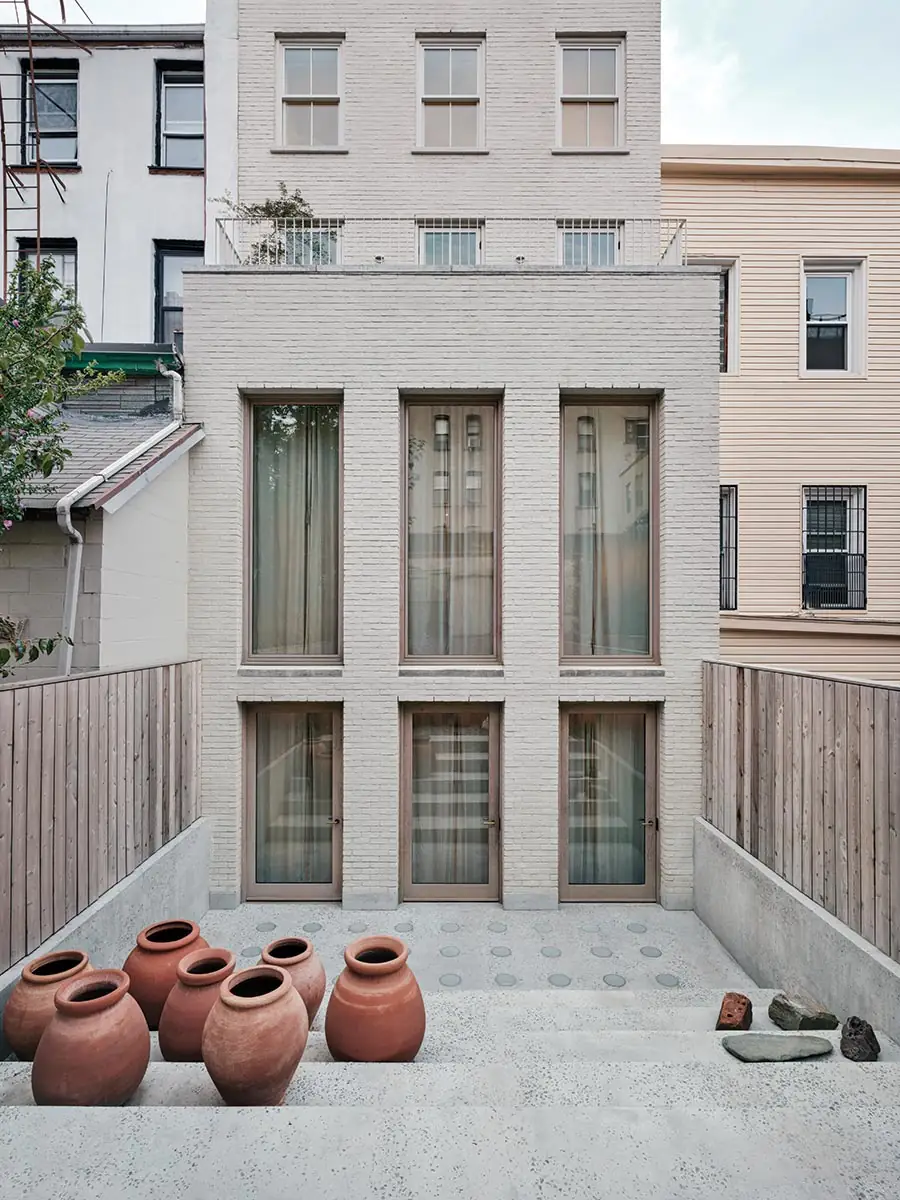
Portholes inspired by SoHo sidewalks bring light into the cellar. Photo © Christopher Sturman
Architect Brent Buck, who founded his studio in 2015, speculates that the pine used in the townhouse is between 350 and 450 years old. Leftover pockmarks from tacks and lag-bolts—reminders of the material’s provenance—stipple the surface and add unconventional character. “With all those perfect little imperfections,” he emphasizes, “wood like this would never make it to market. I just don’t find rift-sawn, straight-grain wood as interesting, and it’s far more wasteful.”
By code, the joists were inspected by a structural engineer to ensure that any checking or holes would not compromise integrity. Where solid construction was not feasible, such as in the kitchen cabinetry, Buck tracked down a craftsman in Eastern Pennsylvania whose Japanese Marunaka surfacer could produce veneer flitches from the same lot of longleaf pine. “Everything has the same flavor,” adds Buck, who seems to know the right person for any job. The broad range of applications, from furniture to architectural elements (like gridded return grates), has given completely new life to the reused lumber and all its embodied carbon.
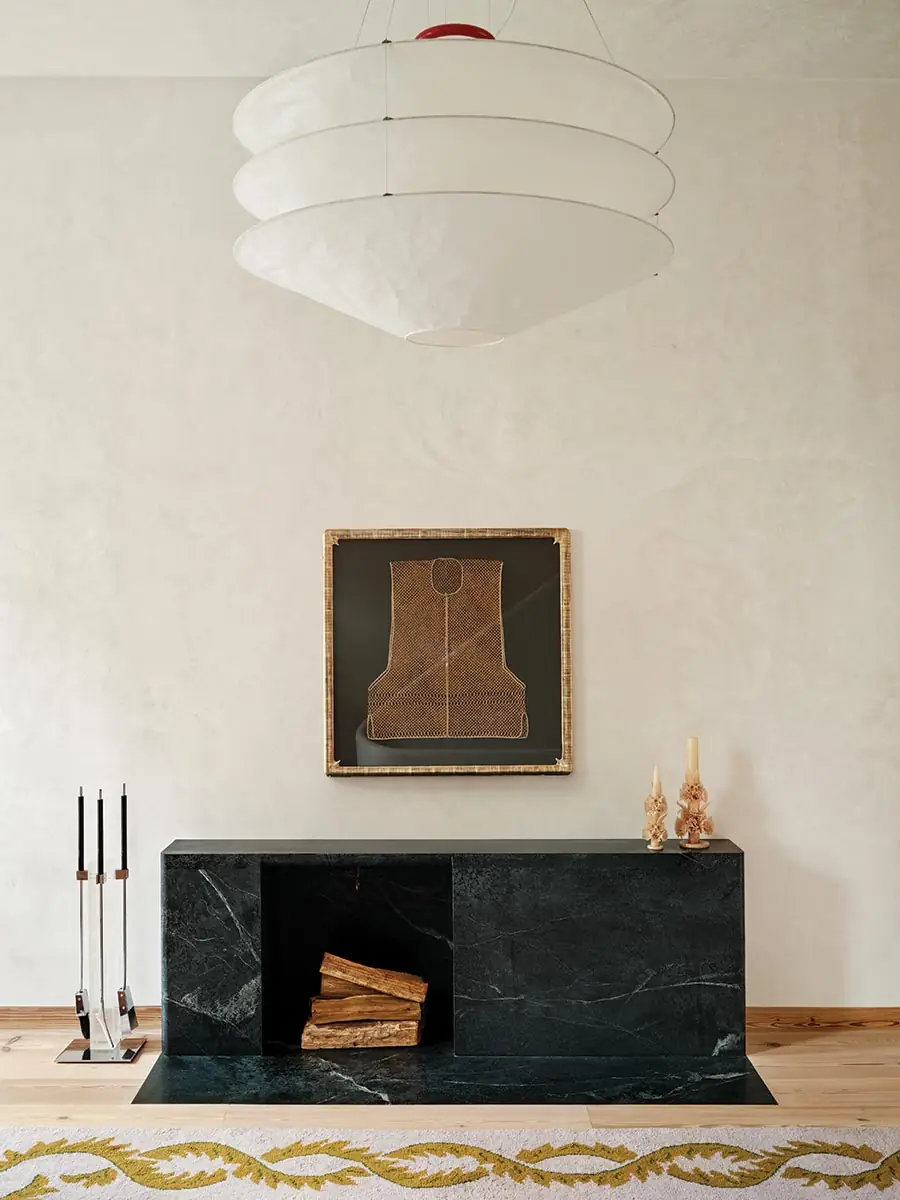
An Ingo Maurer pendant hangs above a soapstone mantel. Photo © Christopher Sturman
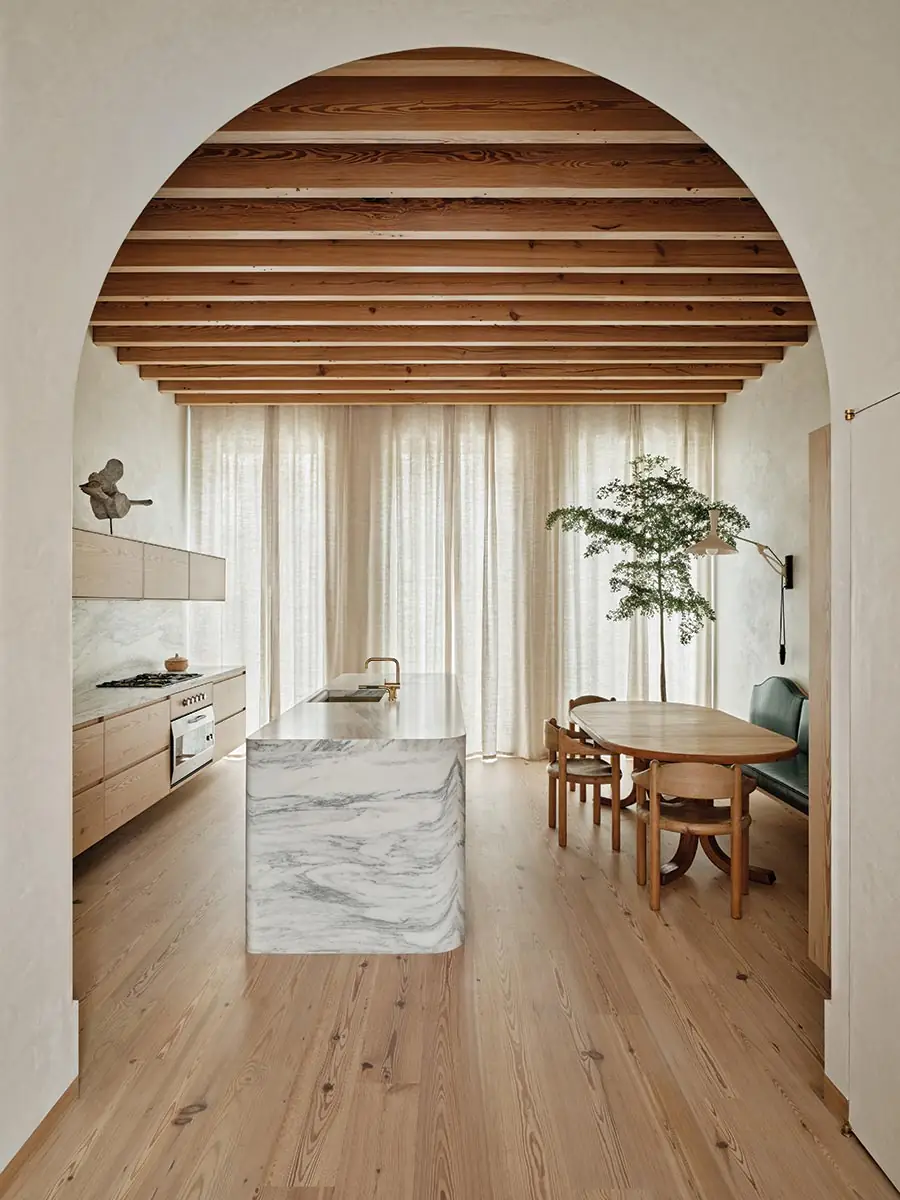
Montclair Danby is used throughout the kitchen (above and top of page). Photo © Christopher Sturman
Other local materials abound. The clients were particularly drawn to Italian marbles, but Buck steered them toward a closer-to-home alternative—Montclair Danby, sourced in Vermont from the world’s largest underground quarry. With meandering ashen veins, this stone makes appearances in the bathrooms and in the kitchen, where it forms an island and the backsplash. The architects also designed every visible lock, knob, pull, and pocket-door latch, which were machined in brass by a shipwright in Maine. (This has become something of a repeat exercise in each of the studio’s residential projects.) As with the bathtub, and the faucets and sinks scattered throughout the house, the hardware is unlacquered. With time, it will ripen and develop a distinctive patina.
The townhouse’s successes—and its lucid celebration of craft and materiality—lay as much in the architect’s own design decisions as in his ability to assemble a seasoned ensemble of collaborators, from expert carpenters to “mudslinging” plasterers. While Buck’s six-person studio busily forges ahead with larger-scale projects, from a mass-timber apartment building in nearby Fort Greene to the adaptive reuse of a former brewery in Philadelphia, his characteristic penchant for detail will no doubt be put to the test.
Click drawings to enlarge
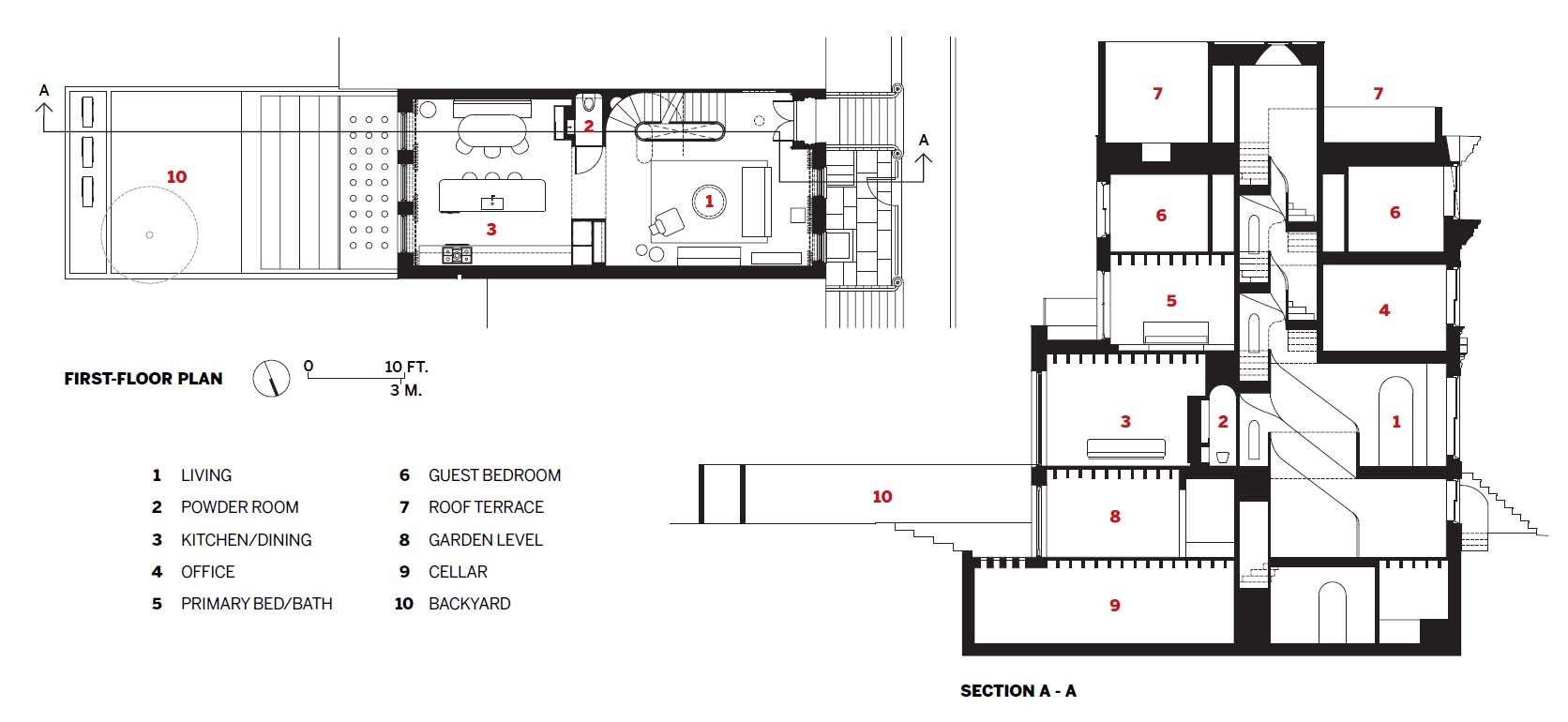
Credits
Architect:
Brent Buck Architects — Brent Buck, principal; William Gregory, project architect; Molly Allfather, Doug Bacon, designers
Engineers:
ANZ Consulting Engineering (m/e/p, sprinkler); Celin Muñoz Consulting Engineer (structural)
General Contractor: Andrew Zalewski
Size:
4,500 square feet (with cellar)
Cost:
Withheld
Completion Date:
November 2023
Sources
Brick:
Glen-Gery
Windows:
Duratherm, Loewen
Glazing:
Vitro Architectural Glass; Lynbrook Glass & Architectural Metals (skylights)
Doors:
Upstate Door, Duratherm, Loewen
Lighting:
Lucifer, Apure, Lutron
Plumbing:
Vola, Jaclo (faucets); Toto (toilets)
Interior Finishes:
Montclair Danby (stone); Hudson Company (reclaimed pine); Benjamin Moore (paints); Heath Ceramics (tile)





